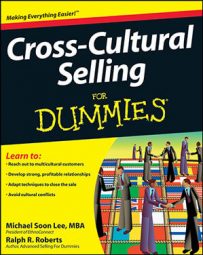When you're talking with a potential customer, that customer may raise objections to completing the sale. Here are the most common objections you're likely to encounter, along with suggestions on how to overcome them:
Your customer doesn’t need your product or service. A primary objection that customers raise is that they don’t really need what you’re selling. Get some details about what exactly puts them off — it may be something else entirely, such as price.
If the customer really has no need for what you’re selling, you should have determined this when assessing their wants and needs. If he’s just come to realize that he has no need, then why is he wasting your time? Let him go.
Your customer lacks the authority to make a decision. This is the pass-the-buck excuse. The customer is afraid to make the decision and wants to hang the responsibility on someone else. This is a common stall tactic and tells you that the customer needs more information.
Try to determine what information the customer needs, provide it, and then ask again for the order. You may also persuade the person to buy on the condition that if the person who has authority says no, the customer can return it. Or you can simply ask to speak to the decision maker.
Your customer isn’t comfortable with deciding right away. Buyers often try to cop out by saying they need some more time to think things over in the comfort and privacy of their own homes. This is a good sign that you haven’t yet established enough trust for them to buy.
To build trust, offer a guarantee. This immediately undercuts any grounds for the objection and reduces the fear of making the wrong decision. Customers can often exchange a purchase for a store credit or an upgraded product, making them happy and keeping their money in your business.
Your product or service isn’t a priority for your customer. Financially responsible shoppers attend to their hierarchy of needs in the order of those needs.
If your customer has other priorities that are more important, help him or her identify an option that’s affordable, or encourage him or her to come back when the situation has changed.
Your presentation hasn’t persuaded your customer. Sometimes, prospects are simply not persuaded by your sales presentation.
If this happens to you, your sales presentation probably needs some work. You haven’t sold your customers on the value of your product or service, and how it differs from the competition.
Your customer has no good reason to change. If you’re trying to persuade someone to use a different product or service, or buy it from a different supplier, you have to account for inertia — a body’s natural resistance to change position.
Answer the question, “What’s in it for them if they change?” Customers choose a different product, service, or supplier either because they’re unhappy with their current product or service, or they need what the new product or service can do for them.

